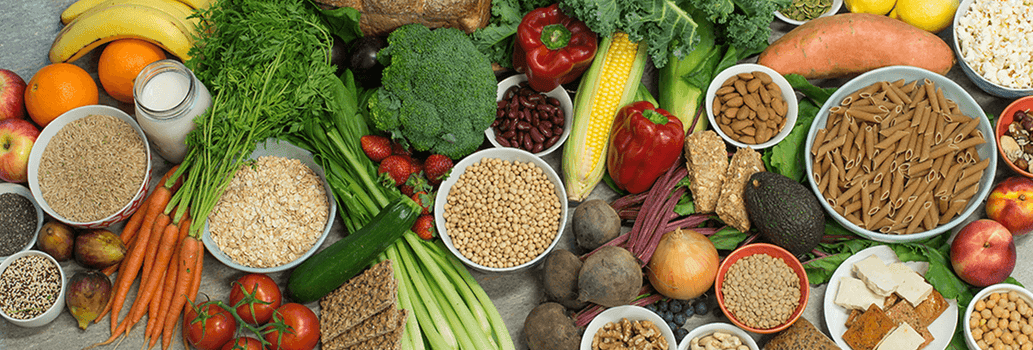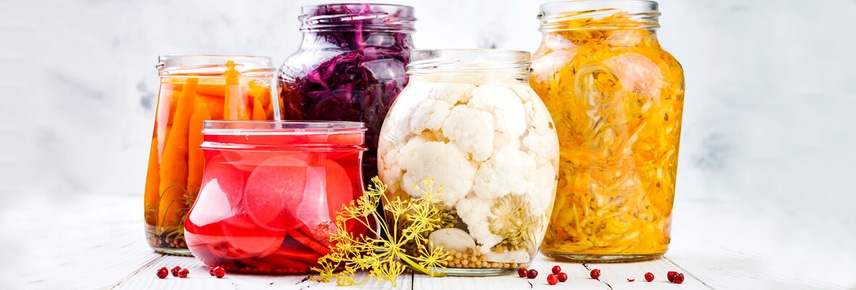
Fibre
What is fibre and why do we need it?
Fibre is the backbone of plant foods such as wholegrains, vegetables╠řand fruits. ItÔÇÖs a type of carbohydrate that remains undigested in your gut and goes ÔÇťstraight throughÔÇŁ, brushing your gut clean and keeping your digestive system healthy.
Most of us only think about eating extra fibre when we get constipated, but actually fibre has many other benefits ÔÇô check them out . Research shows that many Australians are not aware of this, and are not eating anywhere near enough.
What does fibre do in the body?
Most foods we consume ÔÇô such as fats, proteins and carbohydrates ÔÇô are easily broken down in our bodies.╠ř╠řis the╠řpart of plant foods that mostly passes through your digestive system without being broken down or╠řdigested, and╠řis vital for╠řnormal╠řdigestive╠řfunction.╠řWe rely on our gut microbes to digest the fibres for us.╠ř
What are the three types of fibre?
There are╠ř main types of╠řfibre. All are important! Soluble fibre is found in fruit and veg, oats, barley and legumes. Insoluble fibre is found in wholegrain breads, cereal, nuts, seeds, wheat bran and fruit and veg skin (this is the fibre that keeps us regular). Insoluble fibre also plays a critical role in carrying other fibres through the length of the digestive system.╠řLastly, resistant starch is found in wholegrains, legumes, green bananas,╠řand cooked and cooled potatoes.
How much fibre should I be eating?
Adults in Australia should eat╠řÔÇô and up to 40g for╠řpeople with diabetes╠řand╠řfor those trying to improve heart health. Typically, Australian women eat just 21.1g of fibre a day and men 24.8g.
─ű├╩Á╝║Ż╠řdietitian Eliza Baird says our low fibre consumption is a "significant deficiency in╠řour╠řoverall diet".╠ř
"Most grains that Australians eat are refined," Eliza╠řsays. "When grains are refined, the╠řbran and germ╠řare removed and, along with that, most of the goodness of the grain.╠ř╠ř"To increase fibre intake, we need to include more wholegrains in our diet."
How can I increase the amount of fibre in my diet?╠ř
Happily, the answer is not all bran muffins and psyllium husks (although they are certainly going to help). Adding more fibre to your diet is easy.╠ř
- Switch to╠řwholegrains╠řÔÇô Wholegrains contain all three layers of the grain. When those layers are removed, up to 70% of the nutritional benefit╠řis also removed. Make the switch to wholegrain bread, rolls or wraps, brown rice, wholegrain breakfast cereal and pasta and unprocessed flour.
- Add plant foods to your diet╠řÔÇô A wide variety of plant foods, such as╠řfruit,╠řvegetables,╠řlegumes╠řnuts and seeds can help significantly increase your fibre intake.╠ř
- Do not skip breakfast╠řÔÇô╠řEating a╠řbreakfast╠řwith wholegrain cereal, such as wheat biscuits or traditional oats, or wholegrain toast,╠řhelps╠řto╠řset you up well for╠řthe╠řday,╠řeasily boosting╠řyour fibre intake.╠ř╠ř
- Go nuts╠řÔÇô By simply sprinkling some nuts and/or seeds on your cereal, salads or yoghurt, youÔÇÖre boosting your daily fibre. Try some chia seeds on your cereal or some pepitas on your salad.╠ř
- Mix it up╠řÔÇô Fruit and vegetables are a great source of fibre and there are so many to choose from.╠řCheck out╠řwhatÔÇÖs in season╠řfor a tasty╠řand affordable╠řfibre fix and to try something new╠řgive╠řpersimmons, pomegranates, custard apples and savoy cabbage a go.╠ř╠ř
A sudden increase in fibre
While we need to boost our fibre intake,╠ř.╠řIncrease your fibre intake gradually, as a╠řsudden increase in fibre╠řmay╠řlead to abdominal╠řdiscomfort associated with╠řbloating. So up your dietary fibre gradually╠řÔÇô╠řand remember to drink plenty of water.Why not try one of these high fibre recipes.
╠ř

The latest nutrition advice, plus health and wellness tips delivered to your inbox monthly

